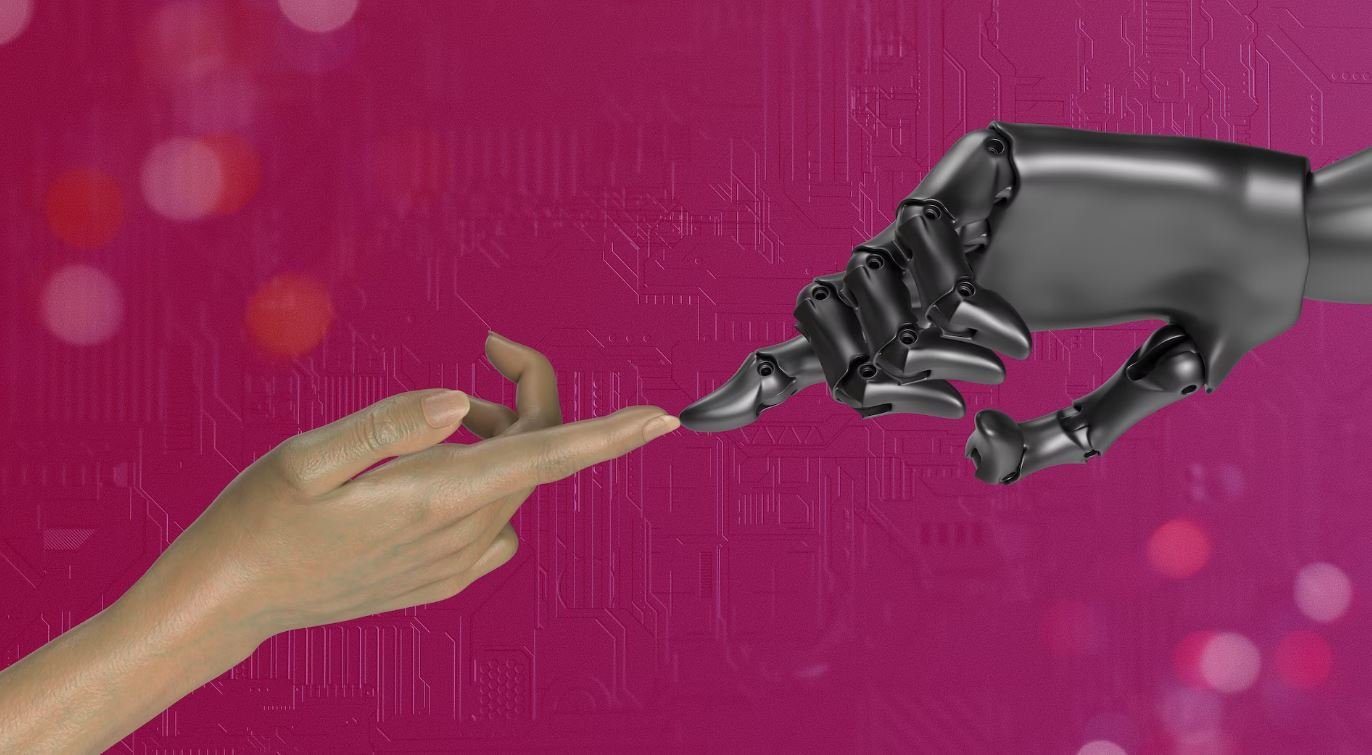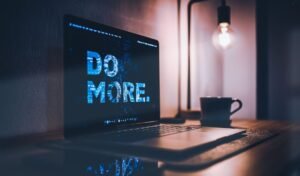Deepfake AI Bot Images
In recent years, artificial intelligence (AI) has made significant advancements in various fields, and the technology known as deepfake has emerged within the realm of image manipulation. Deepfake AI bots can generate highly convincing, fake images that are designed to deceive viewers.
Key Takeaways:
- Deepfake AI technology is capable of creating realistic fake images.
- These images can be used for nefarious purposes, such as misinformation and fraud.
- It is crucial to educate users about identifying and combating deepfakes.
Deepfake AI bots utilize machine learning algorithms to analyze and understand patterns within a dataset of images. By learning from this data, the AI can generate new images that mimic the style and appearance of the original dataset. The result is an image that appears authentic, even though it may be entirely fabricated.
*Deepfake AI bots have the potential to not only generate realistic human faces but also manipulate existing images to alter facial expressions or create entirely new synthetic identities with accurate details.*
Impact of Deepfake AI Bot Images
Deepfake AI bot images have raised concerns due to their potential misuse. **The technology can spread misinformation and fake news,** leading to public confusion and mistrust. Such images could be used to create convincing fake profiles on social media platforms, contributing to identity theft and cyber fraud.
Additionally, deepfake AI bots pose challenges for law enforcement and justice systems. With the ability to create false evidence, criminals can undermine the integrity of investigations and court proceedings. It becomes increasingly difficult to distinguish between real and fabricated content, hence compromising the trust in digital evidence.
Combating the Deepfake Threat
Addressing the deepfake threat requires a comprehensive approach involving education, technological advancements, and collaborations between various stakeholders. Some possible strategies to combat deepfakes include:
- Create awareness: Educate the public about the existence and potential impact of deepfakes, encouraging critical thinking and skepticism when encountering suspicious or questionable images.
- Develop detection tools: Invest in the research and development of AI-driven image recognition technologies that can identify deepfake images with a high degree of accuracy.
- Strengthen regulations: Establish legal frameworks to address the creation and dissemination of deepfake content, imposing consequences on those who use the technology for malicious purposes.
- Collaborate with technology companies: Encourage collaboration between AI developers, social media platforms, and content sharing websites to deploy measures that prevent the spread of deepfakes.
| Year | Number of Detected Deepfakes | Percentage Increase |
|---|---|---|
| 2018 | 1,200 | — |
| 2019 | 5,000 | 316% |
| 2020 | 20,000 | 300% |
*As the number of detected deepfakes continues to rise each year, it becomes evident that the impact of this technology is growing at an alarming rate.*
Conclusion
Deepfake AI bot images pose a significant threat in terms of privacy, security, and trust in digital content. To address this growing concern, it is crucial to raise awareness, develop effective detection tools, strengthen regulations, and foster collaboration among various stakeholders. By taking a proactive stance, we can mitigate the risks associated with deepfake AI bot images and protect the integrity of visual information in the digital age.
| Application | Potential Impact |
|---|---|
| Political Manipulation | Undermining trust in political figures and institutions. |
| Cyber Fraud | Facilitating identity theft and financial scams. |
| Entertainment Industry | Creating realistic digital characters and enhancing visual effects. |

Common Misconceptions
First Misconception: Deepfakes are always created for malicious purposes
One common misconception about deepfake AI bot images is that they are solely used for harmful intents, such as spreading misinformation or creating fake news. However, this is not always the case.
- Deepfakes can also be utilized for entertainment purposes, such as in movies or video games.
- They can be employed in creative arts to enhance storytelling or character development.
- Deepfake technology can be used in the research and development of identity verification systems.
Second Misconception: Deepfakes are always indistinguishable from reality
Another common misconception is that deepfakes are always flawless and undetectable, making it impossible to differentiate between real and manipulated images. However, this is not entirely true.
- There are often subtle visual cues that can help experts identify deepfakes, such as unnatural eye movements or glitches in facial expressions.
- Advanced forensic techniques can be employed to analyze deepfake images and determine their authenticity.
- As deepfake technology progresses, so do the methods to detect and counteract them.
Third Misconception: Deepfakes are exclusively used to target individuals
Some people believe that deepfake AI bot images are mainly used to specifically target individuals and damage their reputation or privacy. However, this belief oversimplifies the scope of deepfake usage.
- Deepfakes can also be created for impersonating public figures, such as politicians or celebrities, in order to manipulate public opinion.
- They can be employed in deep learning and computer vision research to advance AI image recognition technology.
- Deepfakes can be utilized for educational purposes, helping teachers and students understand the implications and risks associated with AI manipulation.
Fourth Misconception: Deepfake AI bots are accessible only to skilled programmers
Many people assume that creating deepfake AI bot images requires extensive programming knowledge and is limited to skilled individuals. However, accessibility has improved.
- Various user-friendly deepfake applications and software have been developed, allowing non-programmers to create basic deepfakes.
- Online tutorials and guides are available to help beginners learn and experiment with deepfake technology.
- However, to develop advanced deepfakes and analyze them effectively, programming skills and expertise are still necessary.
Fifth Misconception: Deepfakes are only a recent phenomenon
Some people believe that deepfakes are a relatively new technology that emerged in recent years. However, the history of deepfakes dates back further than many realize.
- Early forms of deepfake-like manipulations were already being experimented with as far back as the 1990s.
- With the advancement of AI and machine learning algorithms, deepfake technology has evolved significantly.
- However, the increased accessibility and proliferation of social media platforms have contributed to the widespread attention and concerns surrounding deepfakes in recent times.

Deepfake AI Bot Images Increase Spread of Misinformation
Deepfake technology, powered by artificial intelligence (AI), allows for the creation of incredibly convincing fake images and videos. This has led to a surge in the spread of misinformation across the internet. Below are some examples:
Political Deepfakes That Went Viral
In recent years, numerous political deepfakes have garnered significant attention, leading to confusion and controversy:
Influence of Deepfakes on Social Media
Deepfake images posted on social media platforms have had a profound impact on society:
Economic Consequences of Deepfake AI Bot Images
Deepfakes have not only affected individuals but also had economic implications:
Deepfakes and the Erosion of Trust
As deepfake technology advances, trust in digital media and information is increasingly compromised:
Rise of Deepfake Detection Technologies
In response to the dangers of deepfakes, several promising detection technologies have emerged:
Deepfakes in Journalism: Ethical Concerns
The use of deepfakes in journalism raises complex ethical dilemmas:
Implications of Deepfakes in the Entertainment Industry
Deepfake technology has had both positive and negative impacts on the entertainment industry:
Deepfakes and Cybersecurity Risks
Deepfakes are not only a threat to individuals but also pose significant cybersecurity risks:
Legislation and Regulations Addressing Deepfakes
Governments around the world have begun to introduce legislation to combat the negative effects of deepfakes:
In conclusion, the rise of deepfake AI bot images has led to a worrisome increase in the spread of misinformation, eroded trust in digital media, and posed various ethical and economic challenges. While efforts to detect and regulate deepfakes are underway, it is crucial for individuals to remain vigilant and critical consumers of online content.
Frequently Asked Questions
What are deepfake AI bot images?
Deepfake AI bot images refer to computer-generated images that use artificial intelligence techniques to manipulate and alter the appearance of individuals in photographs or videos.
How are deepfake AI bot images created?
Deepfake AI bot images are created using algorithms and machine learning models that analyze existing images and videos of a person’s face, and then generate new images or videos that show the person saying or doing things they have not actually done.
What are the potential risks of deepfake AI bot images?
Deepfake AI bot images can be used for various malicious purposes, such as spreading fake news, defaming individuals, blackmailing, impersonation, or creating unauthorized content without the subject’s consent.
How can I spot deepfake AI bot images?
Spotting deepfake AI bot images can be challenging, but there are some signs to look for, such as unnatural movements or blurriness around the person’s face, inconsistencies in facial expressions or lighting, or unusual behavior in the context of the image.
What is being done to counter deepfake AI bot images?
Various organizations, researchers, and tech companies are actively working on developing methods to detect deepfake AI bot images, including the use of advanced machine learning algorithms and image analysis techniques.
Are deepfake AI bot images illegal?
The legality of deepfake AI bot images depends on the jurisdiction and the context in which they are used. In some cases, creating or distributing deepfake AI bot images without consent may violate privacy laws or be considered a form of fraud or defamation.
Can deepfake AI bot images be used for positive purposes?
While deepfake AI bot images are commonly associated with negative uses, such as deception or manipulation, they can also have positive applications, such as entertainment, artistic expression, or in certain cases, research and development.
What steps can I take to protect myself from deepfake AI bot images?
To protect yourself from deepfake AI bot images, you can avoid sharing sensitive or personal information online, be cautious about the authenticity of media content you encounter, use secure communication channels, and stay informed about the latest deepfake detection methods.
How can deepfake AI bot images impact society?
Deepfake AI bot images have the potential to disrupt the trust in visual media, influence public opinion, and lead to the erosion of truth and authenticity. They can also have serious consequences on individuals’ reputations, privacy, and security.
What should I do if I encounter a deepfake AI bot image?
If you encounter a deepfake AI bot image, it is important to approach it critically and verify the source or authenticity before drawing conclusions or sharing it with others. Reporting potentially harmful deepfake content to appropriate platforms or authorities can also help mitigate the spread of misinformation.




